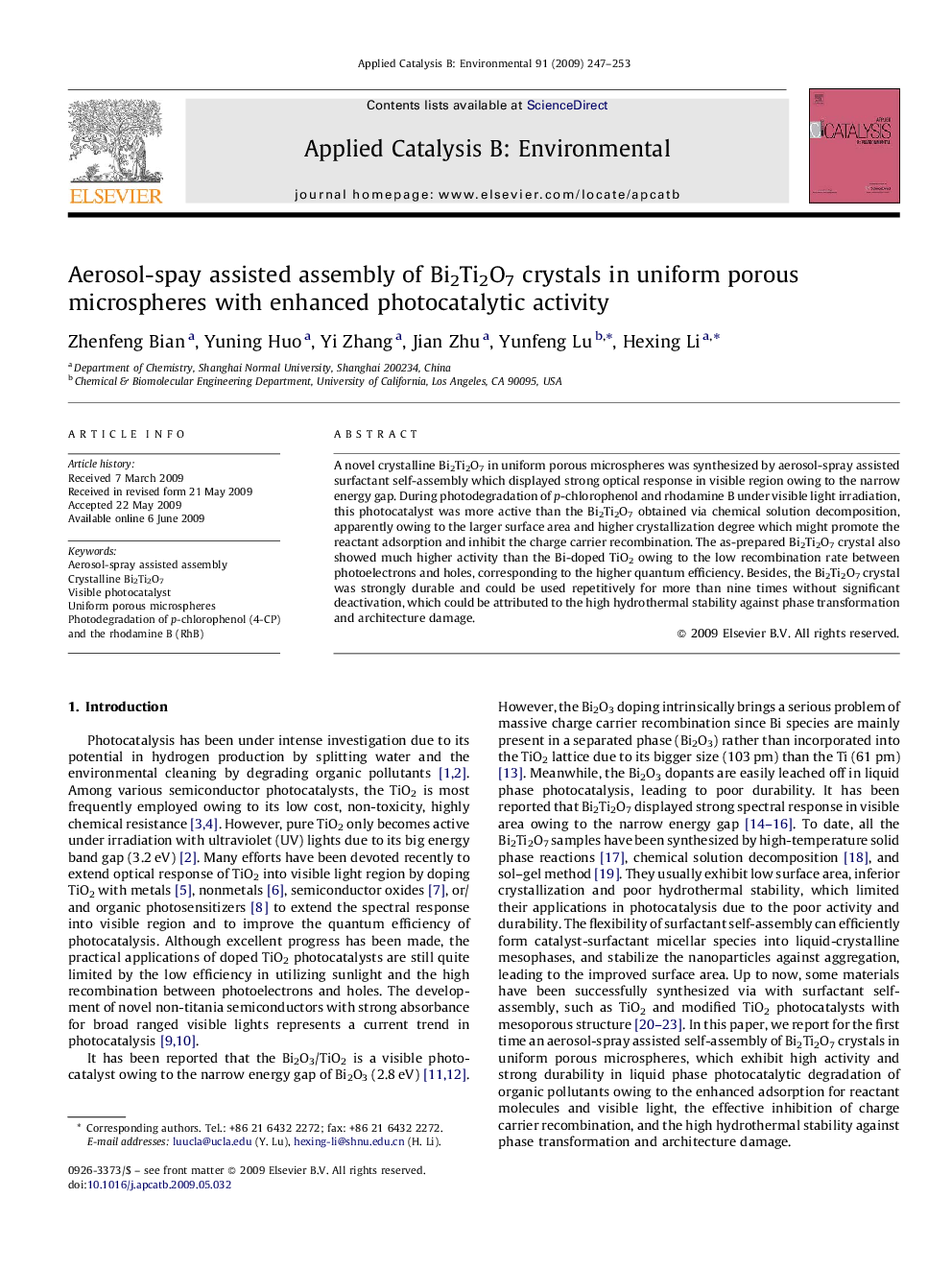| Article ID | Journal | Published Year | Pages | File Type |
|---|---|---|---|---|
| 47734 | Applied Catalysis B: Environmental | 2009 | 7 Pages |
A novel crystalline Bi2Ti2O7 in uniform porous microspheres was synthesized by aerosol-spray assisted surfactant self-assembly which displayed strong optical response in visible region owing to the narrow energy gap. During photodegradation of p-chlorophenol and rhodamine B under visible light irradiation, this photocatalyst was more active than the Bi2Ti2O7 obtained via chemical solution decomposition, apparently owing to the larger surface area and higher crystallization degree which might promote the reactant adsorption and inhibit the charge carrier recombination. The as-prepared Bi2Ti2O7 crystal also showed much higher activity than the Bi-doped TiO2 owing to the low recombination rate between photoelectrons and holes, corresponding to the higher quantum efficiency. Besides, the Bi2Ti2O7 crystal was strongly durable and could be used repetitively for more than nine times without significant deactivation, which could be attributed to the high hydrothermal stability against phase transformation and architecture damage.
